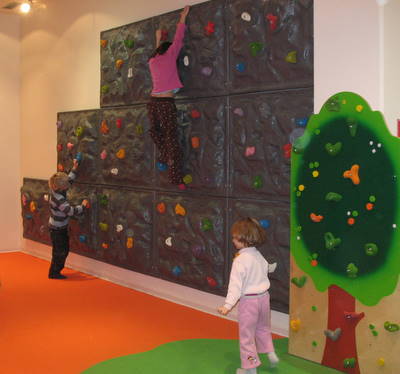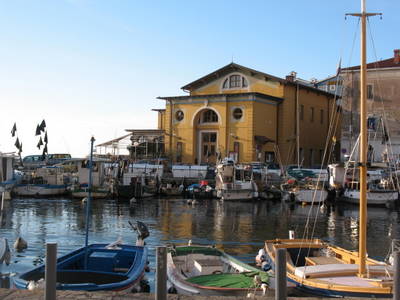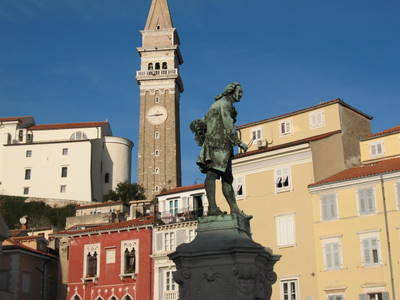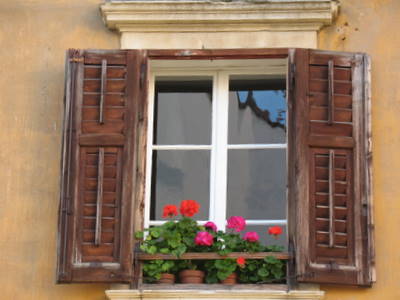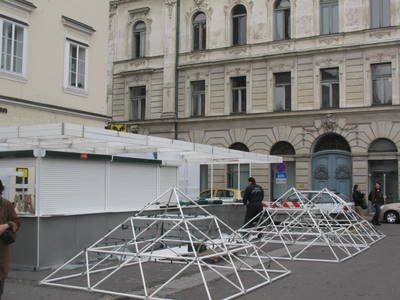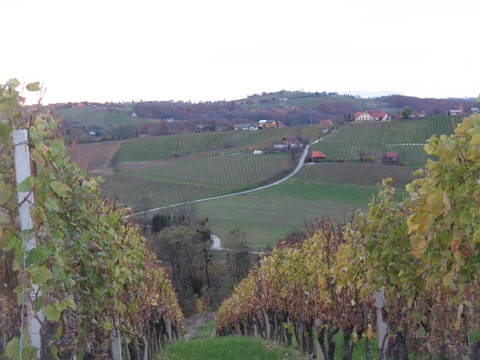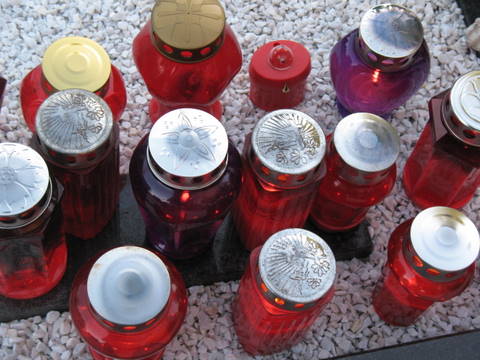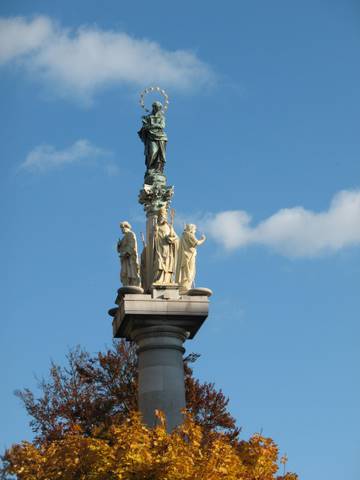A climbing wall for kids in the new play area of a Ljubljana mall, with a climbing “tree” for preschool kids at right. Slovenes are serious about their climbing: There is a saying that to truly be a Slovene, one must ascend the nation’s highest peak, 2,864-meter (9,393-ft.) Mount Triglav, in the Julian Alps, at least once. Perhaps the best way to achieve this goal is to start training at a young age?
Author: Jennifer Dorroh
Ljubljana Codex named a UNESCO “Memory of the World”
 UNESCO has included the sacred document Codex Suprasliensis, held in part by Slovenia’s National and University Library, to its worldwide register of valuable archive holdings.
UNESCO has included the sacred document Codex Suprasliensis, held in part by Slovenia’s National and University Library, to its worldwide register of valuable archive holdings.
Created in Bulgaria in the 11th century, the document is now shared by the national libraries of Slovenia, Poland and Russia. A rare surviving example of the Old Church Slavonic language, the codex is Slovenia’s first entry on the “Memory of the World” list.
Views of Piran, on Slovenia’s Coast
Signs of the Holidays in Ljubljana Center
St. Martin’s Day in Ormož, Slovenia
THE fermented juice of this season’s grapes officially became wine last weekend, and Slovenia marked the occasion with the traditional Martinovanje (St. Martin’s Day) feast, wine tasting, and general merry-making (all before going off to vote on Sunday).
In the town of Ormož, in eastern Slovenia, residents celebrated at a four-day fair on the grounds of the 13th-century Ormož Castle.
Under a big white tent on the castle grounds on Saturday, a “bishop” and his friends had fun baptizing the must (new wine), and then, of course, tasting it.
In another tent, local wineries like Jeruzalem Ormož, one of the fair’s sponsors, offered samples. Visitors could also try honey mead, fruit brandies, pumpkin seeds, and more. It was hard to save room for the feast.
The feast itself, found in local homes and at restaurants like Gostilna Prošnik, features roasted goose, sweet red cabbage, and mlinci, a baked noodle dish. Monika Ivanuša, a local tour guide, said she’d be preparing her family’s spread the next morning, using a goose that family friends gave her as thanks for help picking grapes.
Inside the castle were handicraft exhibitions (including a demonstration of how to weave bottle-shaped baskets in which newly christened vino can wait its turn) as well as folk musicians:
 Down the hall, Miroslav Kosi (in grey suit at right) poured for visitors a blend of white wines from several wineries in the region. “Taste it all at one time,” he advised.
Down the hall, Miroslav Kosi (in grey suit at right) poured for visitors a blend of white wines from several wineries in the region. “Taste it all at one time,” he advised.
For those who preferred to experience their wines one by one, wineries sprinkled throughout the area offered tastings.
 In the cellar of the small but impressive Čurin-Prapotnik winery, vintner Stanko Čurin (seen at left) stood among the oak barrels as he poured white wines for guests. He specializes in semi-sweet and sweet wines, including the 2004 Šipon Ledeno Vino (Šipon Iced Wine), a medal winner at the London International Wine Fair. Čurin says Šipon got its name when Napoleon visited the region. Upon tasting the wine, the Slovene speakers listening to him thought they heard him say “Šipon.” But what had he really said? According to Čurin: “C’est bon.”
In the cellar of the small but impressive Čurin-Prapotnik winery, vintner Stanko Čurin (seen at left) stood among the oak barrels as he poured white wines for guests. He specializes in semi-sweet and sweet wines, including the 2004 Šipon Ledeno Vino (Šipon Iced Wine), a medal winner at the London International Wine Fair. Čurin says Šipon got its name when Napoleon visited the region. Upon tasting the wine, the Slovene speakers listening to him thought they heard him say “Šipon.” But what had he really said? According to Čurin: “C’est bon.”
It still is.
Survivors of WWII Children’s Detention Camp Tell Their Stories in Slovenian Documentary
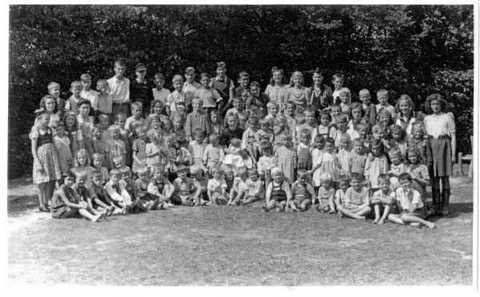
Photo courtesy of Miran Zupanič
DURING the months after Germany surrendered in WWII, the Yugoslav government separated more than 90 children from their mothers and fathers at camps northeast of Ljubljana. While the children were detained at one camp, many of their parents were executed as enemies of the state at another one nearby.
Sixty-two years later, a dozen of these survivors speak out in the poignant documentary film “Otroci s Petrička” (Children of Petriček Hill). The winner of the best picture award (the Vesna) at last month’s 10th Festival of Slovenian Film, the documentary aired this week on national television.
The children, who at the time ranged in age from toddlers to teenagers, were held at Petrička Hill while their parents were imprisoned at another camp near the town of Celje.
In the fall of 1945, the government released the children, sending some to orphanages or adoptive homes, and others to live with extended family. A few were sent with the Red Cross to Austria and Germany. Only one of the children left the camp with both parents alive.
The filmmaker, Miran Zupanič, says secrecy surrounded the camps until a Slovene newspaper published a story about them in the early 1960s. “If you are without your parents and for fifteen years you are not allowed to speak about your trauma, this is awful,” he says. “They are in awful trauma for all their lives.”
Zupanič felt compelled to tell the children’s stories after reading survivor Ivan Ott’s memoir, “Ukradeno Otroštvo” (“Stolen Childhood”).
“The subject was very sad, very tragic, very strong, and absolutely unknown to people in Slovenia,” he says.
He shot the film in black and white to focus more purely on the survivors who shared their stories. So far, it has appeared solely in Slovene without subtitles, but it is being sent to film festivals in Berlin and other cities, where it may find an international distributor. Zupanič says that if there is enough interest, his producer may be able to arrange a Ljubljana screening with English subtitles.
The filmmaker says he wanted to tell the story not from an ideological point of view, but from an artistic and personal perspective. “When you see other people in one ideological uniform or another, you see them as enemies or in some stereotypical form,” he says. “But you must look deeper and find what is human.”
Remembrance Day at Ljubljana’s Žale Cemetery
Candles placed yesterday in memory of departed loved ones at Ljubljana’s Žale Cemetery. Find a few more photos here.
Last Day of October in Ljubljana
Column topped by representation of the Virgin Mary in Levstik Square
Although today is a national holiday (Reformation Day), flower vendors stayed late at the Central Market in anticipation of tomorrow’s holiday, Remembrance Day, when Slovenes traditionally visit the graves of their deceased loved ones.
A view of Ljubljana Castle’s Belvedere Tower and the north side of the Ljubljanica River near Cobbler’s Bridge
“Emerging Slovenia” in London
Portrait of contemporary dancer Iztok Kovač by Borut Peterlin
IMAGINATIVE portraits of Slovenian artists, performers, and others making their mark on the nation’s cultural life are the focus of a new exhibition in London.
“Emerging Slovenia,” a collection of 38 portraits by photojournalist Borut Peterlin, opened this week at the Host Gallery in central London’s Clerkenwell neighborhood.
First published in the Slovene-language magazine Mladina, the portraits often juxtapose incongruous elements that play off their subjects’ public images. In one, jazz festival founder Marijan Dović saws a barbed wire fence using the bow of a violin. (Or is he playing the fence?) Another (above) depicts contemporary dancer Iztok Kovač falling down a flight of stairs.
Peterlin says he aims for “this kind of twist in the picture, to have visual elements that are fighting between each other. I say, ‘Let’s make it unpredictable, something that’s fun to see not only in the week it’s made, but that will be interesting years later.’”
Taken together, the portraits form a lively introduction to the creative life of Slovenia today.
The Host Gallery considers Peterlin’s work “an interesting and unusual way of presenting a country through its artists,” says the gallery’s Michael Regnier.
“We’re quite a new, young gallery, so we’ve done eclectic shows, and a young photographer from Slovenia showing portraits of his compatriots fits in perfectly,” he says. And the timing was right: The Host was enthusiastic about highlighting Slovenia as it prepares to take on the presidency of the European Union in January.
Two years ago, Jon Levy, of the magazine foto8, and Adrian Evans, of the agency Panos, founded the gallery to provide a showcase for work that might not otherwise find its audience. Its early exhibitions included Pep Bonet’s “POSITHIV+,” a multi-country, multi-year project on HIV/AIDS.
“The outlets for classic photojournalism are becoming smaller and smaller,” Regnier says. “The gallery is not dependent on the whims of the advertising industry. It offers a much more pure, much more direct way of displaying the work.”
It will also offer wider exposure for the work of Peterlin, who has covered many of the country’s biggest stories for Mladina. During the last year, he has captured gripping photos of members of a Roma family who were evicted from their home in eastern Slovenia.
Peterlin, who is also the magazine’s photo editor, says his experience with photojournalism informs the portraits, and vice-versa. “The aesthetic that I learn in photojournalism is applied here, and the portrait aesthetic appears in the photojournalism, as in the pictures I took of deaf children.”
Peterlin chooses the portraits’ subjects in cooperation with other editors of Mladina, but the approach to each shot is purely his own.
“I want to think of a way to turn the situation upside down,” he says. In preparing to photograph Kovač, perhaps best known for dancing on a chimney in the 1997 film Vrtoglavi Ptič (Dizzy Bird), Peterlin says he told his subject: “Ok, you are defying gravity, but I would like to photograph you falling in your own apartment.”
The choices can also be impulsive, as when he photographed Slovenian writer Nejc Gazvoda underwater. “With Nejc, it wasn’t really rational,” he says. “It was warm that day, so I said, ‘Let’s shoot it in the pool.’”
Despite their artistic and inspired nature, the portraits are as deadline-driven as any news photo would be. “I have a day or two to think about it and an hour to do it. It’s really stressful. But the stress helps me with focus,” Peterlin says.
“I have to minimize all the doubts. I have to be very clear with what to do,” he says. “I really learn how to exclude the thoughts that are not productive. I just have to concentrate on the subject and act fast.”
“I say, ‘Let’s do a good picture in an hour, and then run to the next press conference.’”
For those who can’t make it to London, the portraits selected for the Host exhibition are here. The rest of the portraits in the Mladina series are here. (In the latter gallery, move your cursor over each photo for nuggets about the subject and the photographer’s inspiration for the shot.)
“Emerging Slovenia” will be at the Host Gallery (1 Honduras Street, near the Barbican Tube station) through November 3.
